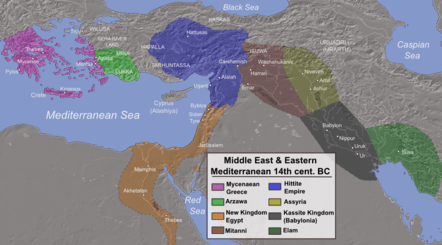Madduwatta

Madduwatta (sometimes given as Madduwattas[1]) was a king of Arzawa, in Anatolia, about 14th or 13th century BC.
Life
Perhaps, Madduwatta was first a local king of a Lukka city-state at coast of southwestern Asia Minor.
He faced a struggle, in the Lukka Lands, against a "man from Ahhiya", named Attarsiya (or Atreus, in Hellenized rendering[2]) and lost his rule. Tudhaliya II, great king of Hittite Empire, gave Madduwatta asylum, and even gave him the mountainous kingdom Zippasla (i.e. Sippylos, the mountainous part of Lydia?) with the Siyanti River Land (Maeandrus river?); but, on condition that Madduwatta use it as a base to invade Arzawa.
When Madduwatta did this, Kupanta-Kurunta, king of Arzawa, destroyed his army and occupied Zippasla. Once more, Tudhaliya defeated Madduwatta's enemy and restored Madduwatta to his throne. And then, Madduwatta's previous enemy Attarisiya attacked Zippasla, with 100 chariots. This time, Madduwatta did not even defend himself, but fled a third time to the Hittites. Tudhaliya sent a third army under Kisnapali (a Hittite general) to the land to drive Attarissiya out. This time, the Hittite army was ordered to stay.
Madduwatta, apparently, then decided he was never again going to suffer such indignities. When Dalawa (Tlos) and Hinduwa rebelled, Madduwatta suggested that Kisnapali take Hinduwa while Madduwatta take Dalawa. But while Kisnapili was on his way to Hinduwa, Madduwatta allied with Dalawa, and with its help ambushed and killed Kisnapali. Independent once more, Madduwatta married the Arzawan king's daughter, and soon took that kingdom too.
When Tudhaliya ordered Madduwatta to put down a revolt in Hapalla (or Caballa), he did - but then Madduwatta forced Hapalla, too, to switch loyalty to his own side. He then bullied Pisidia into his kingdom, even closer to the Hittite heartland. Under Tudhaliya's successor Arnuwanda I, Madduwatta even allied with his old foe Attarisiya and invaded Alashiya.
It has been speculated in print since 2007[3] that the Hittite form Madduwatta[s] may correspond to a hypothetical, unattested Hellenized form *Madyattes.
Bibliography and references
- ↑ The Arzawa Page
- ↑ Bryce, Trevor R., 'The Trojan War: Is There Truth behind the Legend?', Near Eastern Archaeology, Vol. 65, No. 3. (Sep., 2002), p. 193
- ↑ Emmet J Sweeney, The Pyramid Age, 2007, p. 345.
- Beckman, Gary, 1999, Hittite Diplomatic Texts, 2nd ed. Scholars Press, Atlanta.
- Bryce, T., 1998, The Kingdom of the Hittites
- Drews, R., 1993, The End of the Bronze Age
- James, Peter, 1995, The Sunken Kingdom. Jonathan Cape, London. Introduction.
- Gurney, O. R., 1991, The Hittites
- Lowell, Ian Russell, Annals of Mursili - years 1 to 8
- Macqueen, J.G., 1996, The Hittites
- Singer, Itamar, 2002, Hittite Prayers. Scholars Press, Atlanta.